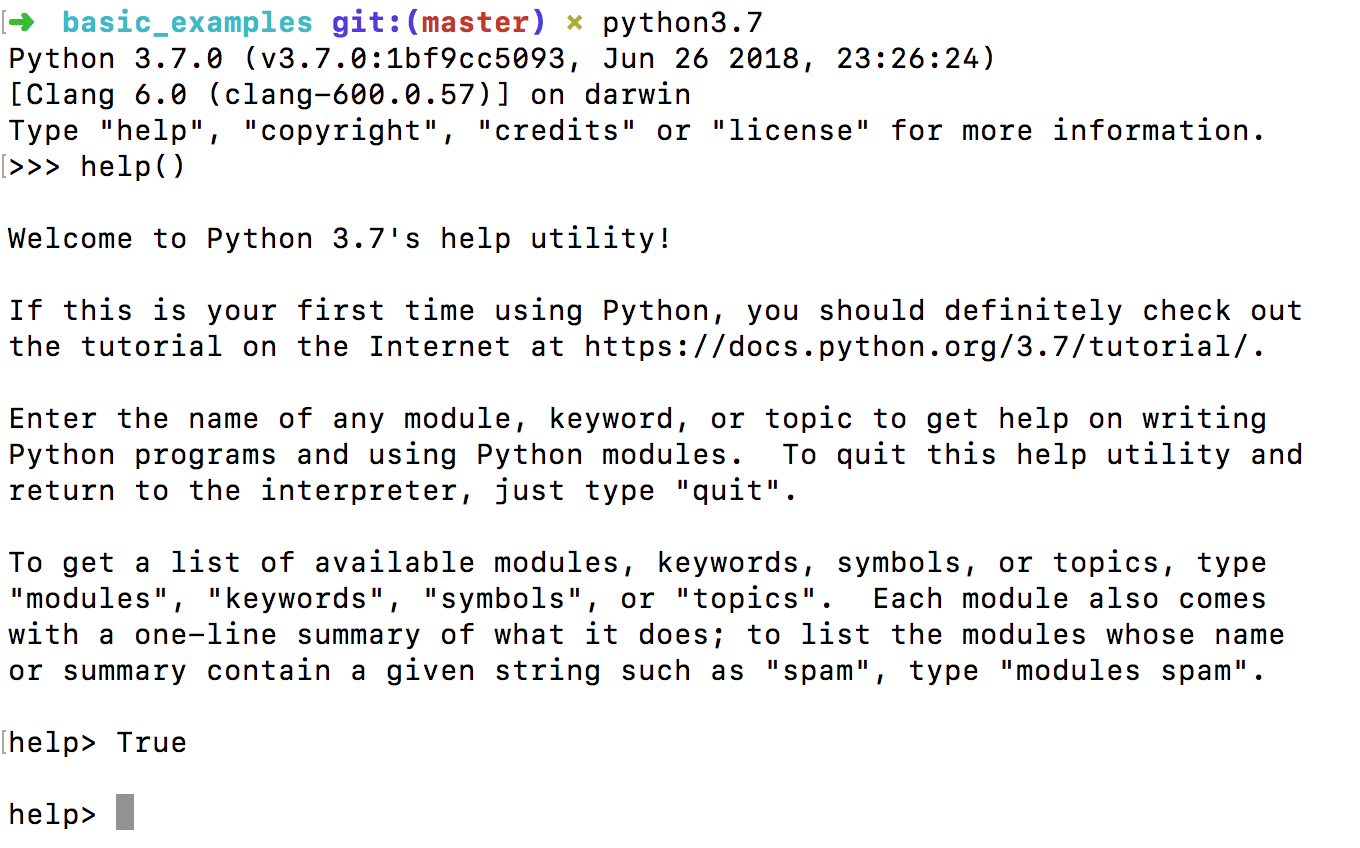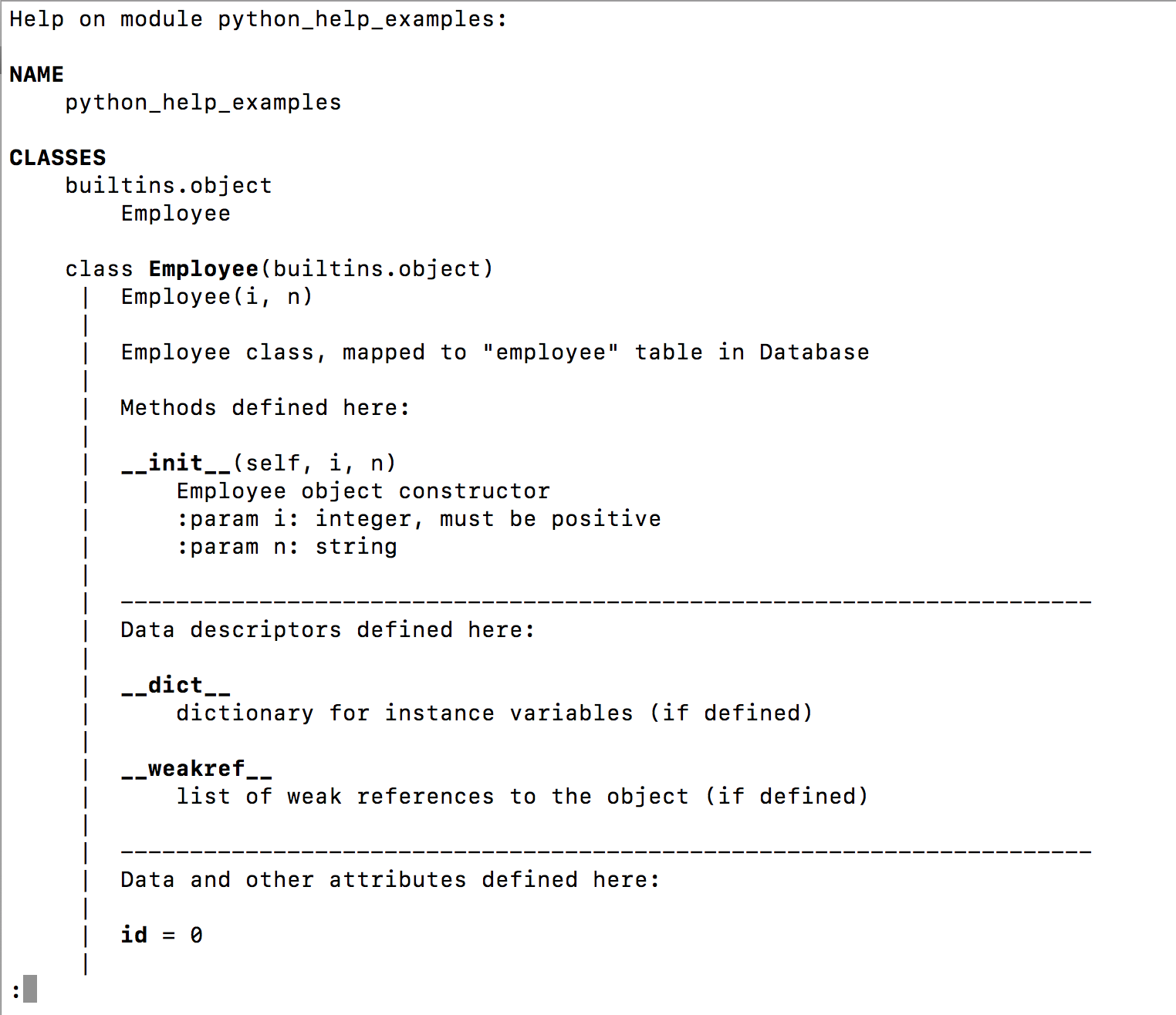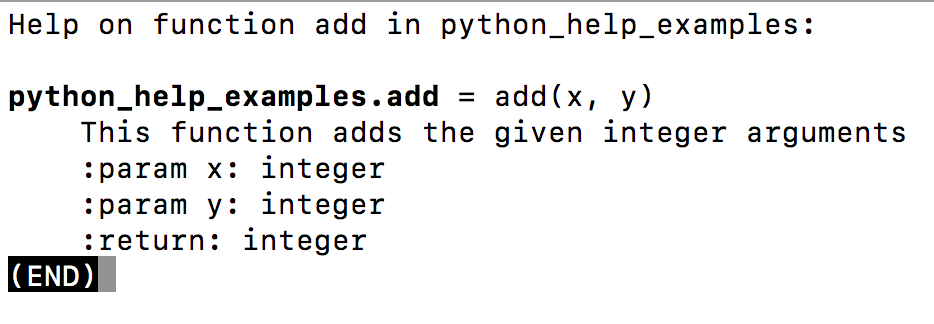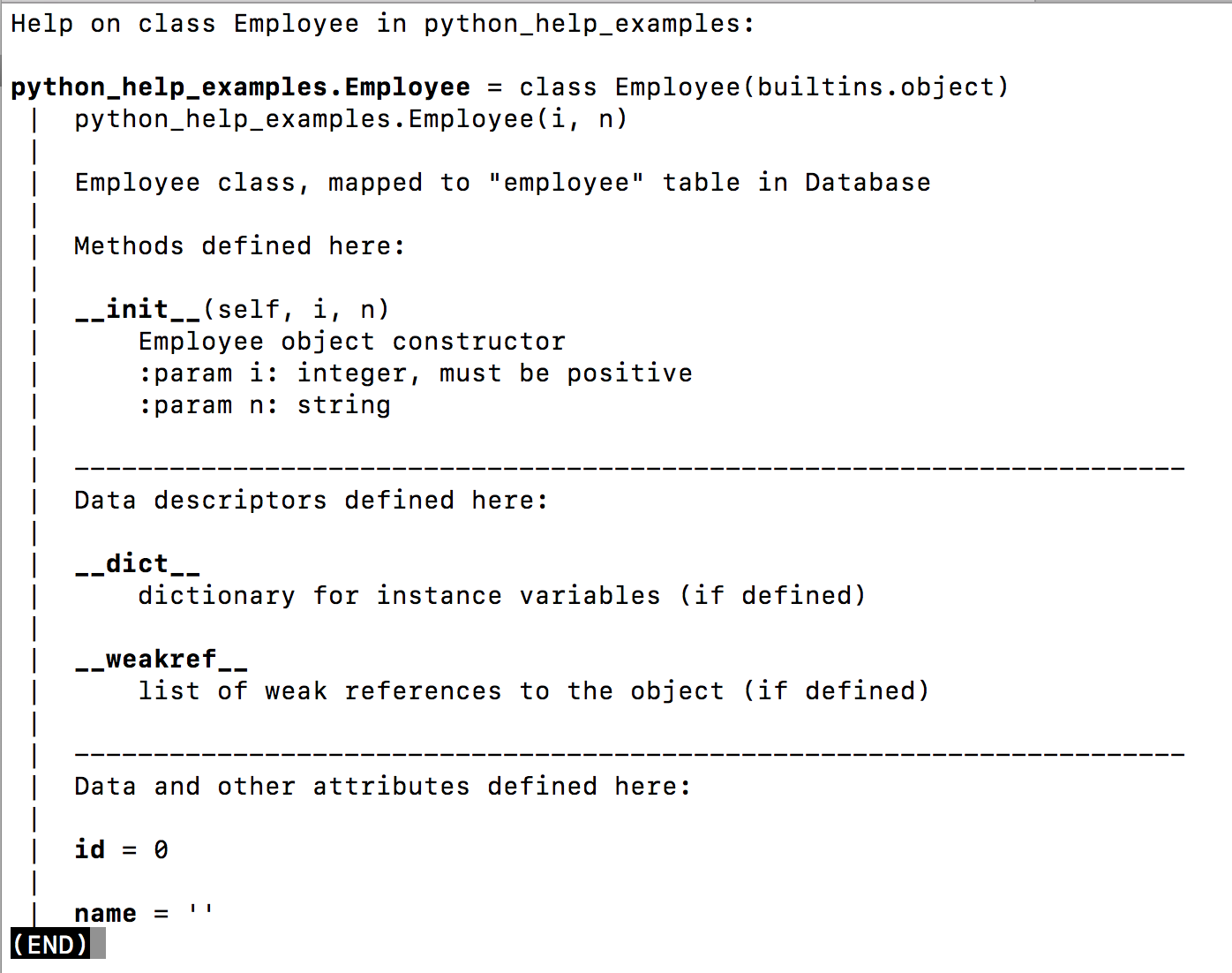Python 도움말() 함수는 지정된 모듈, 클래스, 함수, 변수 등의 문서를 얻는 데 사용됩니다. 이 방법은 일반적으로 파이썬 인터프리터 콘솔과 함께 사용되어 파이썬 객체에 대한 세부 정보를 얻습니다.
Python 도움말() 함수
Python 도움말() 함수 구문은 다음과 같습니다:
help([object])
인수가 지정되지 않으면 대화식 도움말 시스템이 인터프리터 콘솔에서 시작됩니다.  파이썬 도움말 콘솔에서는 모듈, 클래스, 함수 이름을 지정하여 도움말 문서를 얻을 수 있습니다. 일부 예시는 다음과 같습니다:
파이썬 도움말 콘솔에서는 모듈, 클래스, 함수 이름을 지정하여 도움말 문서를 얻을 수 있습니다. 일부 예시는 다음과 같습니다:
help> True
help> collections
help> builtins
help> modules
help> keywords
help> symbols
help> topics
help> LOOPING
도움말 콘솔에서 나가려면 quit를 입력하십시오. 또한 파이썬 콘솔에서 직접 도움말 문서를 얻을 수도 있습니다. 도움말() 함수에 매개변수를 전달하여
>>> help('collections')
>>> help(print)
>>> help(globals)
globals() 함수에 대한 도움말() 함수의 출력은 무엇인지 살펴보겠습니다.
>>> help('builtins.globals')
Help on built-in function globals in builtins:
builtins.globals = globals()
Return the dictionary containing the current scope's global variables.
NOTE: Updates to this dictionary *will* affect name lookups in the current global scope and vice-versa.
사용자 정의 클래스 및 함수에 대한 help() 정의
사용자 정의 클래스 및 함수에 대한 help() 함수 출력을 정의할 수 있습니다. 이를 위해 docstring (문서화 문자열)을 정의합니다. 기본적으로 메서드 본문의 첫 주석 문자열이 해당 메서드의 docstring으로 사용됩니다. 이것은 세 개의 큰따옴표로 둘러싸입니다. 다음과 같은 코드를 가진 python 파일 python_help_examples.py가 있다고 가정해 봅시다.
def add(x, y):
"""
This function adds the given integer arguments
:param x: integer
:param y: integer
:return: integer
"""
return x + y
class Employee:
"""
Employee class, mapped to "employee" table in Database
"""
id = 0
name = ''
def __init__(self, i, n):
"""
Employee object constructor
:param i: integer, must be positive
:param n: string
"""
self.id = i
self.name = n
함수, 클래스 및 해당 메서드에 대한 docstring을 정의했다는 점을 주목하세요. 문서화를 위한 일정한 형식을 따르셔야 합니다. 일부를 PyCharm IDE를 사용하여 자동으로 생성했습니다. NumPy docstring 가이드는 도움말 문서 작성의 올바른 방법에 대한 아이디어를 얻을 수 있는 좋은 자료입니다. 이 docstring을 python 콘솔에서 도움말로 가져오는 방법을 살펴봅시다. 먼저 이 스크립트를 콘솔에서 실행하여 함수 및 클래스 정의를 로드해야 합니다. 이를 위해 exec() 명령을 사용할 수 있습니다.
>>> exec(open("python_help_examples.py").read())
globals() 명령을 사용하여 함수 및 클래스 정의가 있는지 확인할 수 있습니다.
>>> globals()
{'__name__': '__main__', '__doc__': None, '__package__': None, '__loader__': <class '_frozen_importlib.BuiltinImporter'>, '__spec__': None, '__annotations__': {}, '__builtins__': <module 'builtins' (built-in)>, '__warningregistry__': {'version': 0}, 'add': <function add at 0x100dda1e0>, 'Employee': <class '__main__.Employee'>}
‘Employee’와 ‘add’가 전역 범위 사전에 존재함을 알 수 있습니다. 이제 help() 함수를 사용하여 도움말 문서를 얻을 수 있습니다. 몇 가지 예제를 살펴보겠습니다.
>>> help('python_help_examples')

>>> help('python_help_examples.add')
Help on function add in python_help_examples:
python_help_examples.add = add(x, y)
This function adds the given integer arguments
:param x: integer
:param y: integer
:return: integer
(END)

>>> help('python_help_examples.Employee')

>>> help('python_help_examples.Employee.__init__')
Help on function __init__ in python_help_examples.Employee:
python_help_examples.Employee.__init__ = __init__(self, i, n)
Employee object constructor
:param i: integer, must be positive
:param n: string
(END)

요약
파이썬의 help() 함수는 모듈, 클래스, 함수에 대한 세부 정보를 얻는 데 매우 유용합니다. 사용자 정의 클래스와 함수에 대한 도움말 문자열을 정의하는 것이 항상 최상의 실천 방법입니다.
GitHub 저장소에서 완전한 파이썬 스크립트와 더 많은 파이썬 예제를 확인할 수 있습니다. GitHub 저장소를 참조하세요.
참고: 공식 문서
Source:
https://www.digitalocean.com/community/tutorials/python-help-function













